Cupid and Psyche: Love Story Through Sculpture
Cupid and Psyche, mythological characters immortalized in Metamorphoses by Apuleius, have been inspiring artists through the centuries. Sculptors...
Valeria Kumekina 14 June 2024
Heracles (or Hercules) is perhaps the most frequently depicted hero in Greek and Roman art. This sculpture from approximately 125 CE, known as the Lansdowne Heracles, was among a collection of exquisite statuary commissioned during the reign of the Roman Emperor Hadrian (76-138 CE) and was inspired by ancient Greek works of the 4th century BCE. Lansdowne Heracles is considered among the best classical sculptures in the United States today. It occupies a place of prominence in the magnificent Getty Villa in southern California, USA.
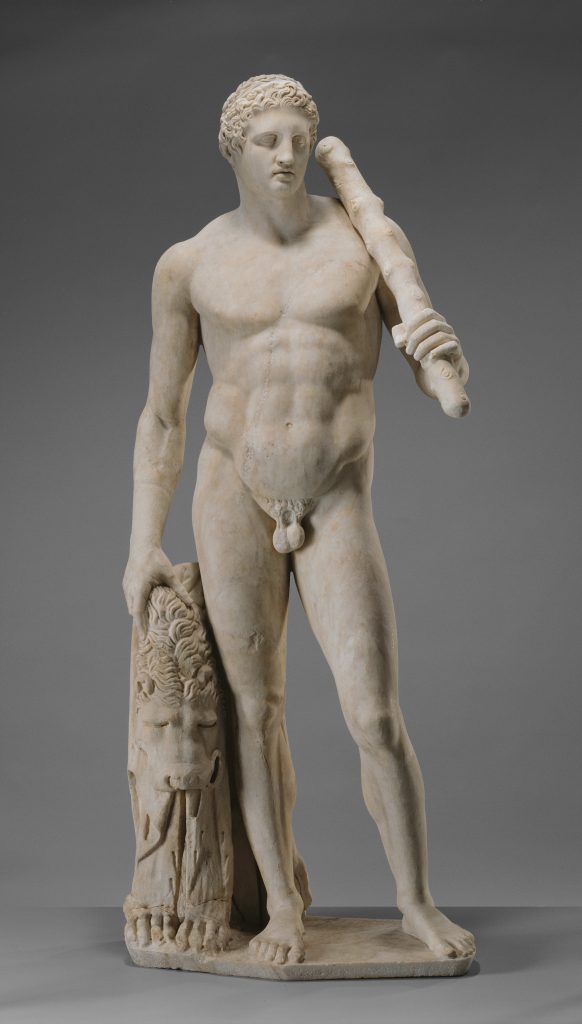
The Lansdowne Heracles, ca. 125 CE, Getty Villa, Malibu, CA, USA.
The Greek hero Heracles was the result of the union of Zeus with a mortal woman, Alcmene. Heracles was born with exceptional strength along with a fierce temper and later came to be regarded as the epitome of strength and bravery.
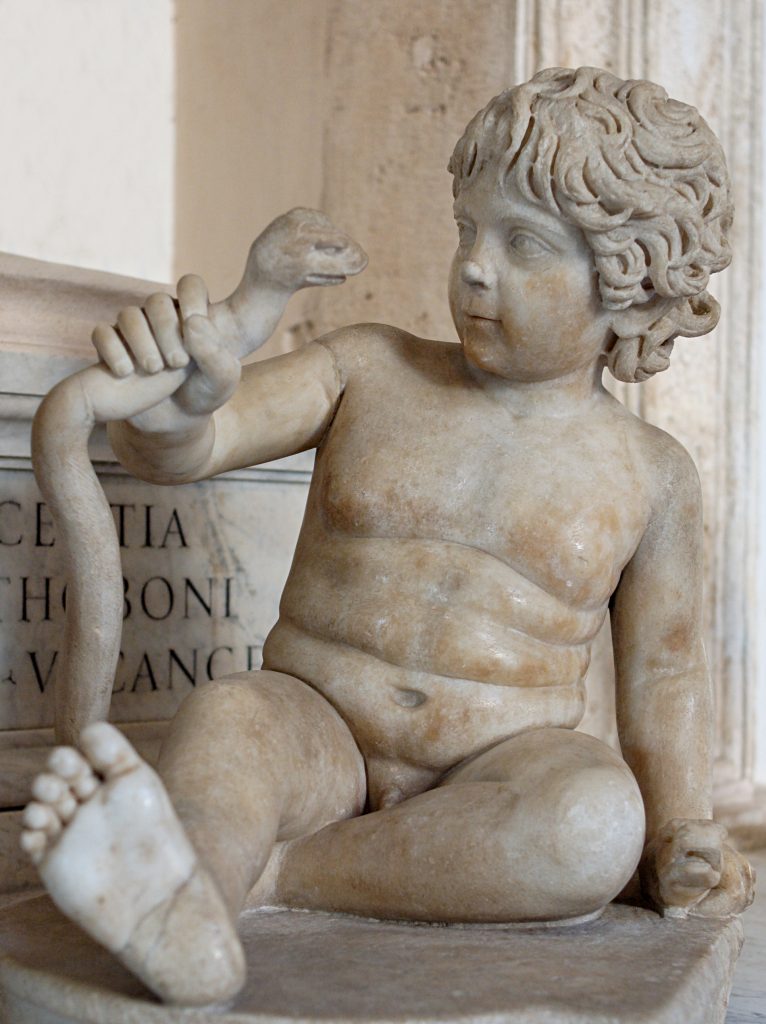
Heracles as a Boy Strangling a Snake, ca. 2nd century CE, Capitoline Museums, Rome, Italy.
In prevailing Greek lore, Hera, the wife of Zeus, was overcome with rage and jealousy at the birth of Heracles and made multiple attempts to kill him throughout his life. After several setbacks, Hera succeeded in driving Heracles to insanity, which resulted in him murdering his wife and children. Once he recovered from his fit of insanity, Heracles was overcome with grief and regret. He then fled to the Oracle of Delphi to seek a way to absolve himself of his sins. Hera, however, guided the Oracle to push him further into despair. As a result, Heracles fell into the servitude of King Eurysthus, the king of Mycenae and Tirynsupon, upon whose prompting he performed his 12 labors as a form of penance. These labors were seemingly impossible feats that Heracles completed with the assistance of Hermes and Athena and thus he became hailed as Greece’s great hero.
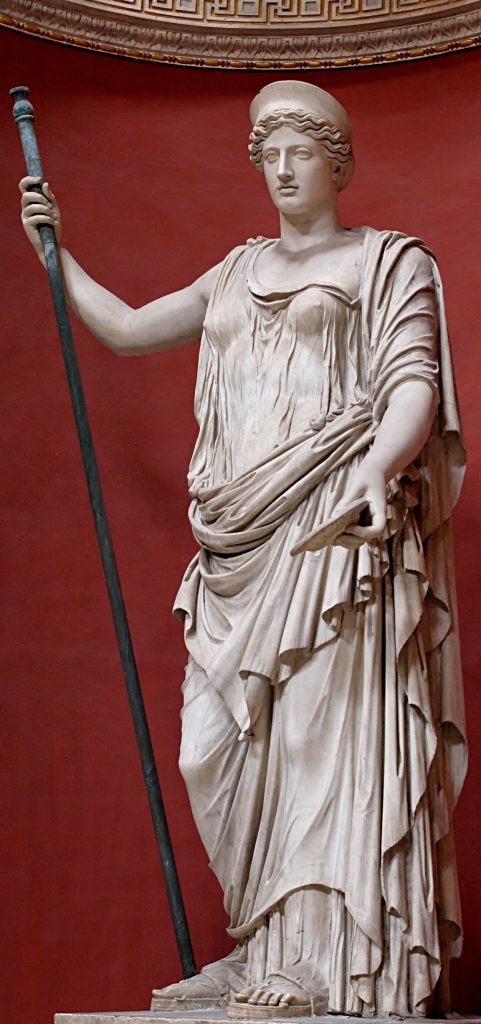
Statute of Hera, ca. 5th century BCE, Museo Pio-Clementino, Vatican Museums, Vatican. Wikimedia commons (public domain).
In Greek and Roman art, Heracles is frequently illustrated performing the 12 labors. The Lansdowne depiction shows Heracles in the moments following the first labor. This feat required him to slay the Nemean Lion, a vicious beast that ravaged Nemea and remained unfettered due to his golden fur that was impervious to attack and his claws that were sharper than any moral weapons. One can recognize the moment by the attributes of the club over Heracles’ left shoulder and the lion skin in his right hand.
What is striking in the depiction is Heracles’ asymmetrical contrapposto arrangement, where he is illustrated with his weight borne on one foot, resulting in a casual and relaxed stance. The stance emphasizes how slaying the Nemean Lion was an effortless feat for Heracles’ superhuman strength.
As with most Greek and Roman heroes, Heracles is depicted in peak physical form.
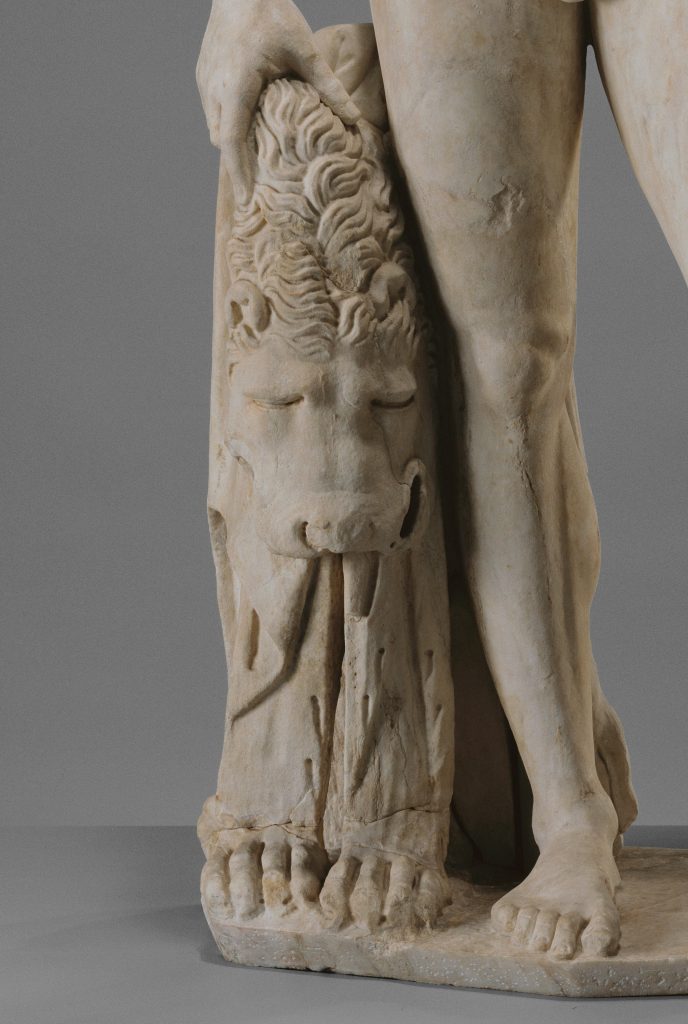
The Lansdowne Heracles, ca. 125 CE, Getty Villa, Malibu, CA, USA. Detail.
The Lansdowne depiction of Heracles was inspired by a lost Greek statue from the school of Polykleitos dating to around 300 BCE. The original function of the statue was likely not merely decorative but also religious. According to myth, Heracles, who was born half-mortal, ascended into a divine being upon his demise. He was depicted in the figurative form to seek inspiration and association with his superhuman strength and athleticism. Great warriors such as Alexander the Great, identified with and invoked the might of Heracles’ brute strength.
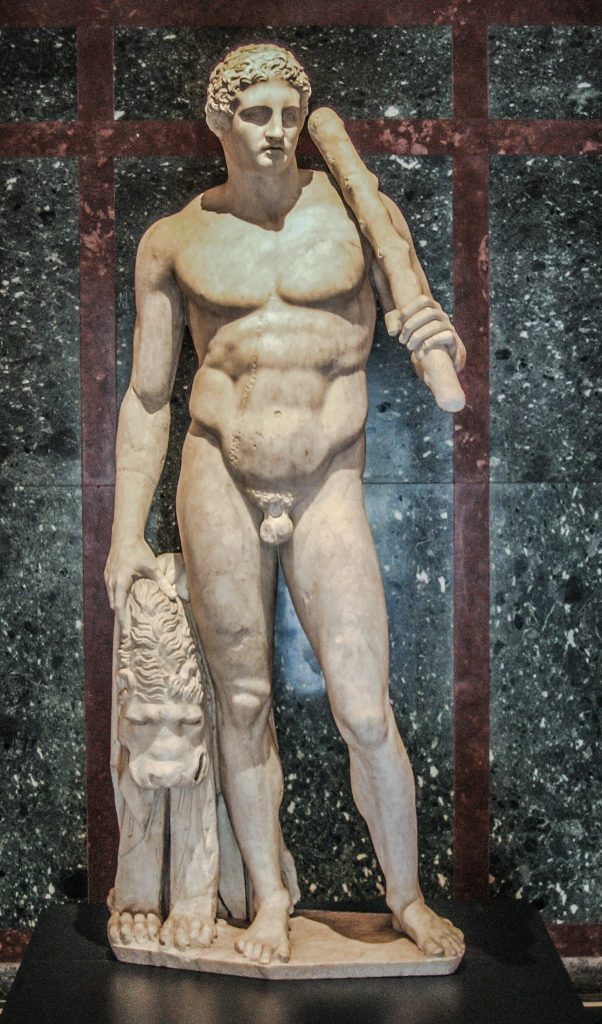
The Lansdowne Heracles, ca. 125 CE, Getty Villa, Malibu, CA, USA. Photograph by Ptyx via Wikimedia Commons (CC-BY-SA-3.0).
Greek statuary was highly coveted in ancient Rome and was displayed in many properties belonging to wealthy Romans. They imbibed a sense of prestige and luxury and served as indicators of the great wealth and the esteemed status of their owners.
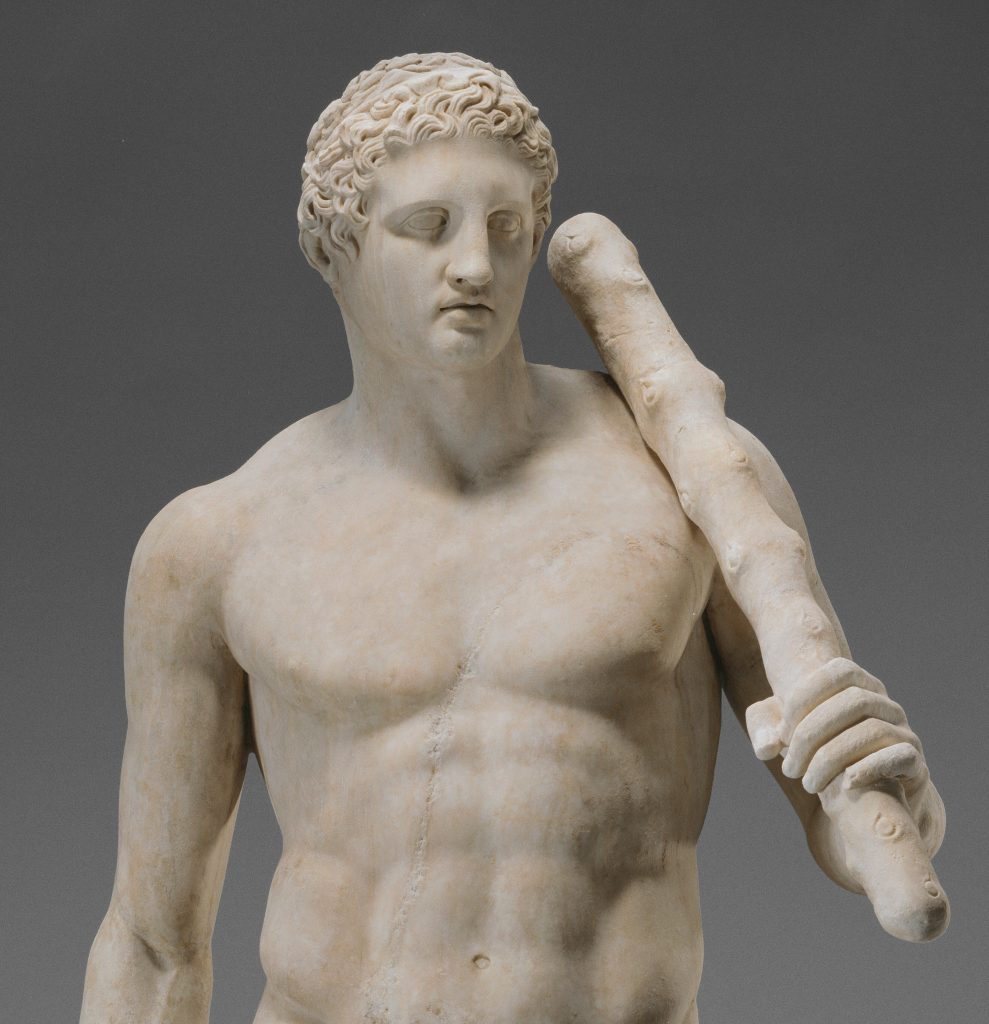
The Lansdowne Heracles, ca. 125 CE, Getty Villa, Malibu, CA, USA. Detail.
The origins of the Lansdowne Heracles were traced to the Roman Emperor Hadrian between 117 to 138 CE. It was discovered in the year 1790 near the ruins of Hadrian’s Villa outside of Rome and is believed to be among the many statutes commissioned by Hadrian, a great proponent of Greek culture.
It was purchased by the first Marquess of Lansdowne in 1792 who undertook an initial phase of extensive restoration to replace or complete missing body parts. The sculpture remained at the Lansdowne House in London, UK, where it was displayed until its sale in 1951 to the oil baron and esteemed art collector, J. Paul Getty. The statute underwent another phase of conservation around 1976. At that time, it was observed that the initial efforts involving internal iron rods had developed rust that was endangering the integrity of the marble.
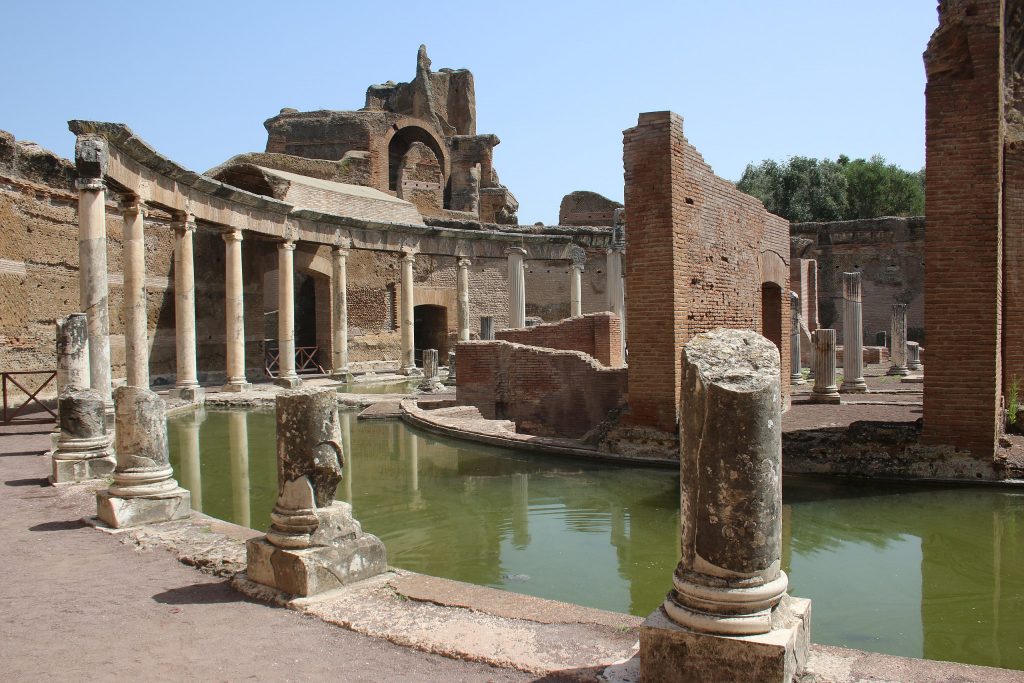
View of the Villa Hadriana at Tivoli, Italy, 2018. Photograph by FrDr via Wikimedia Commons (CC-BY-SA-4.0).
The historical and mythological significance of the Lansdowne Heracles enthralled J. Paul Getty and he held a considerable appreciation for its undeniable artistic merit. It became one of his most prized acquisitions and also inspired his decision to build the Getty Villa in the style of the Villa dei Papiri, a luxurious Roman residence buried following the eruption of Mount Vesuvius in 79 CE.
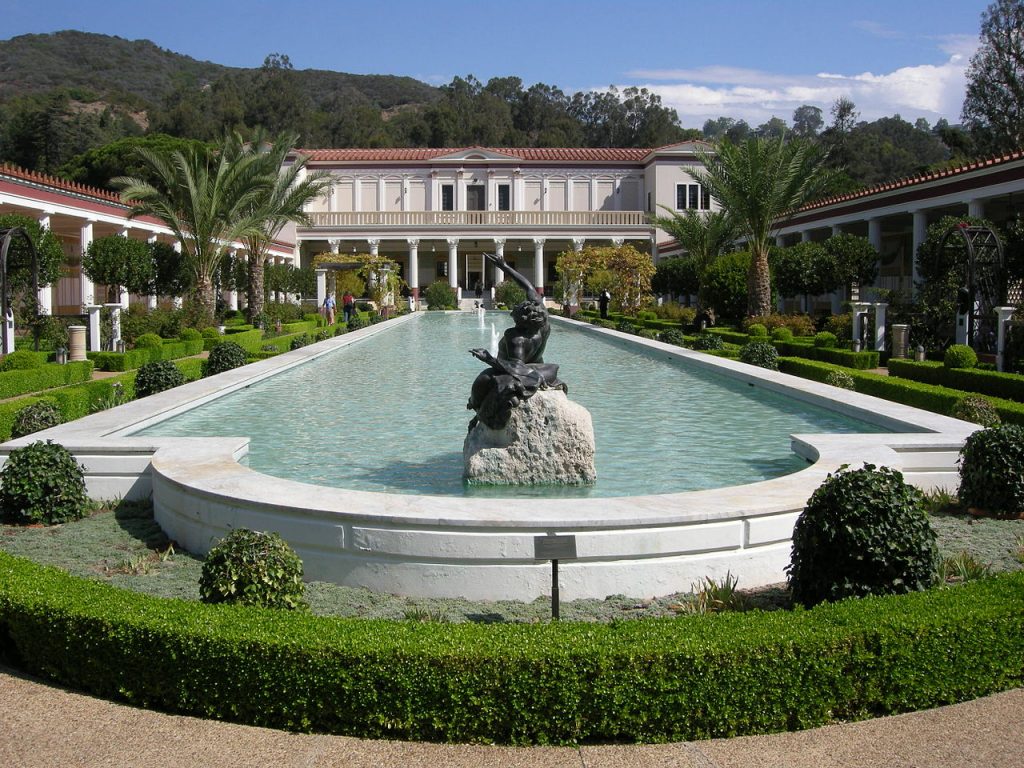
View of the outer Peristyle Garden of the Getty Villa Roman gardens, 2010, Getty Villa, Malibu, CA, USA. Photograph by Bobak via Wikimedia Commons CC-BY-3.0).
DailyArt Magazine needs your support. Every contribution, however big or small, is very valuable for our future. Thanks to it, we will be able to sustain and grow the Magazine. Thank you for your help!